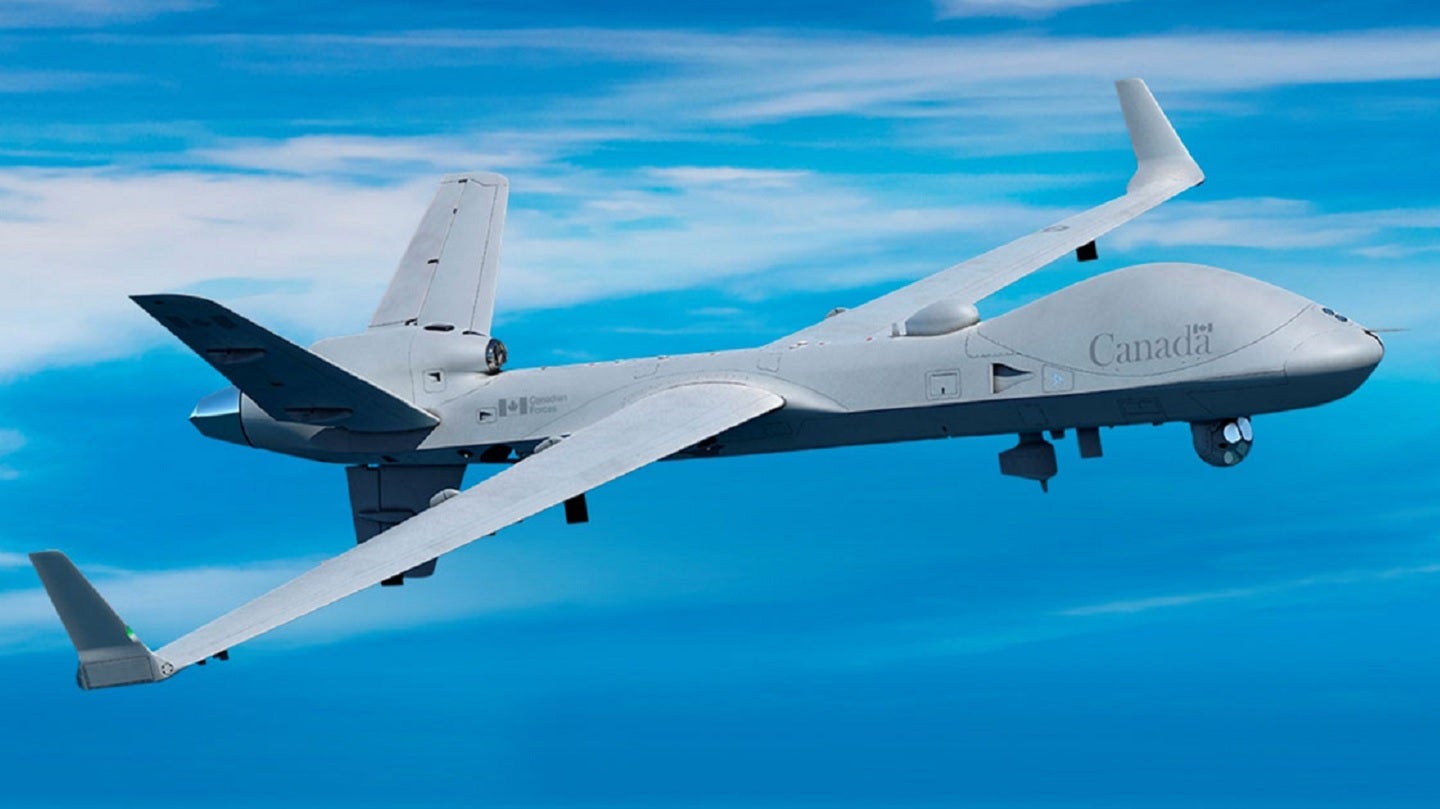
The US State Department has approved a possible Foreign Military Sale (FMS) to Canada for MQ-9B munitions and other systems in a deal worth up to $313.4m, (C$423m) despite the platform not actually being in service with the Canadian Armed Forces.
The MQ-9B SkyGuardian – also called SeaGuardian in maritime patrol configuration – is the next-generation variant of the ubiquitous MQ-9A Reaper, whose shape has become synonymous with drone warfare. The MQ-9B will feature improved sense-and-avoid technologies that enable its operation in unsegregated airspace, a long-held capability that will put such uncrewed platforms closer to parity with crewed military aircraft.
However, Canada does not – yet – operate the MQ-9B drone, nor its MQ-9A predecessor.
In a 15 September statement by the US Defense Security Cooperation Agency, the possible FMS listed a range of equipment to be integrated into MQ-9Bs purchased through direct commercial sales, to include: 12 AN/APY-8 Lynx Synthetic Aperture radars; 219 AGM-114R2 Hellfire II missiles; 18 KMU-572 tail kits for the GBU-38 Joint Direct-Attack Munition and GBU-54 Laser JDAM; 12 Mk82 500lb General Purpose bombs; and six Mk82 Filled Inert bombs, among other equipment.
Manufacturer of the MQ-9B SkyGuardian UAV, General Atomics Aeronautical Systems (GA-ASI), had in 2018 partnered with Canadian industry to create Team SkyGuardian Canada in a bid to win a lucrative contract to supply next-generation medium altitude, long endurance drones to Ottowa, with an eye on interoperability with Nato and, perhaps more importantly for the US, North American Aerospace Defense Command (NORAD).
In 2022, GA-ASI opened a new office in Ottawa, as it prepared to respond to Canada’s next-generation RPAS programme.
How well do you really know your competitors?
Access the most comprehensive Company Profiles on the market, powered by GlobalData. Save hours of research. Gain competitive edge.

Thank you!
Your download email will arrive shortly
Not ready to buy yet? Download a free sample
We are confident about the unique quality of our Company Profiles. However, we want you to make the most beneficial decision for your business, so we offer a free sample that you can download by submitting the below form
By GlobalDataMQ-9B SkyGuardian is a 5,700kg gross take-off weight aircraft with more than 40 hours of un-refuelled mission endurance. Capable of carrying wide-area maritime radars, long-range, HD-video and other sensor payloads, the drone can operate in far northern latitudes through a SATCOM datalink and transmit collected sensor data in real-time to any location across Canada.
A spokesperson for the Canadian Department of National Defence (DND) told Airforce Technology that work for the procurement of a new uncrewed system was ongoing.
“Should the finalisation phase conclude successfully, contract award is expected within this fiscal year (FY 23/24). Following contract award by the end of this fiscal year, we expect the first delivery in 2028,” the DND spokesperson stated in an emailed response.
“In preparation for a potential acquisition, Canada submitted a Letter of Request (LOR) through the United States (US) Government’s Foreign Military Sales programme, in April 2023, to acquire sensors, communications equipment, weapons and associated support that will be required as part of a potential purchase of MQ-9B remotely piloted aircraft systems.
“The US Government’s announcement does not indicate that a decision has been taken. Neither the submission of the LOR nor the receipt of an LOA commits Canada to the purchase of these systems. The final purchase decision will be based on the capability offered, the pricing, and the benefits to Canadian industry,” the spokesperson stated.
Canada’s next-generation RPAS: a timeline
Canada’s requirement for a new uncrewed platform first emerged in 2017 when the administration at the time announced that the country would acquire “remotely piloted aircraft systems”, also known by the acronym RPAS. The capability would be a step change for Canada, which prior to this point had only operate smaller uncrewed systems at the tactical level.
According to the official timeline, the Canadian requirement is in Phase 3, outlining definition before the Phase 4 implementation and Phase 5 close out. The bid of evaluation was scheduled to be completed in 2023, although this appears to have slipped slightly to the 2023/24 financial year.
In 2019 project approval was given for the initiation of a definition phase and a draft invitation to qualify published and used as a pre-qualificaiton process to confirm “that a competitive environment exists”, after which qualified suppliers were to be invited to compete via a request for proposal.
In February 2020, a draft RfP was issued to qualified suppliers, followed in February 2022 with the official RfP. The same year, the first security acceptability assessments were carried out.
The Canadian DND confirmed that, following an invitation to qualify, two suppliers qualified for this procurement in May 2019, these being GA-ASI and fellow US-based supplier L3 Technologies MAS.
However, “one qualified supplier subsequently withdrew from the competition”, the DND said, stating that a proposal was received in August 2022 from the remaining bidder – United States Government and GA-ASI.
The current project cost is expected to be between C$1bn and C$4.99bn.







